

Coca-Cola’s “Open Happiness” Marketing Campaign Case Study
- Maximum Impact
- September 27, 2023
Coca-Cola’s “Open Happiness” marketing campaign, launched in 2009, was a global marketing initiative aimed at creating a positive and uplifting brand image while promoting the company’s products. Here’s a case study of this campaign:
Background:
In the late 2000s, Coca-Cola faced several challenges, including increasing competition, concerns about the health implications of sugary drinks, and changing consumer preferences. The company wanted to reposition itself as a brand that brought joy and happiness to people’s lives while staying relevant and appealing to a younger demographic.
The primary objective of the “Open Happiness” campaign was to:
- Reinforce Coca-Cola as a brand associated with happiness and positive emotions.
- Create a unified global marketing message that could resonate with diverse cultures and audiences.
- Drive brand loyalty and sales for Coca-Cola products.
Key Elements of the Campaign:
The Slogan: “Open Happiness” served as the central message of the campaign, encouraging people to find happiness and joy in everyday moments.
TV Commercials: Coca-Cola released a series of TV commercials featuring heartwarming and emotionally uplifting scenarios, often set in diverse global locations. These ads showed people from different cultures coming together, enjoying Coca-Cola, and sharing moments of happiness.
Print and Outdoor Advertising: The campaign included print ads and billboards featuring the “Open Happiness” slogan and images that conveyed the theme of joy and unity.
Social Media and User-Generated Content: Coca-Cola engaged with its audience through social media platforms, encouraging people to share their moments of happiness using the hashtag #OpenHappiness. This user-generated content further amplified the campaign’s message.
Music and Sponsorships: Coca-Cola used music as a central element of the campaign, partnering with musicians and using music in their commercials and events to evoke emotions and happiness.
Positive Brand Image: The “Open Happiness” campaign succeeded in reinforcing Coca-Cola’s brand image as one associated with happiness and positive emotions.
Global Reach: The campaign’s message was universally relatable, allowing Coca-Cola to connect with a diverse global audience.
Social Media Engagement: Encouraging user-generated content through the #OpenHappiness hashtag increased engagement and allowed Coca-Cola to connect with consumers on a personal level.
Sales and Market Share: While it’s challenging to attribute specific sales increases directly to the campaign, Coca-Cola maintained its position as one of the world’s most recognized and consumed soft drinks during this period.
Awards and Recognition: The campaign received numerous advertising and marketing awards for its creativity and effectiveness.
Lessons Learned:
Emotion and Positivity: The campaign’s focus on emotions, positivity, and universal themes like happiness resonated with consumers.
Global Appeal: Creating a campaign with global appeal can help a brand connect with diverse audiences across different cultures.
User-Generated Content: Encouraging user-generated content and social media engagement can enhance a campaign’s reach and authenticity.
Consistency: The consistent use of the “Open Happiness” message across various marketing channels helped reinforce the brand’s identity.
Partnerships: Collaborations with musicians and artists can enhance a campaign’s emotional impact.
In conclusion, Coca-Cola’s “Open Happiness” campaign successfully conveyed a message of joy and unity, reinforcing the brand’s image as a source of happiness. While the impact on sales is difficult to quantify directly, the campaign had a positive effect on Coca-Cola’s brand perception and engagement with consumers, making it a notable case study in the realm of global marketing and branding.
Blog Categories
- Digital Marketing
- Business Development
- Artificial Intelligence
- Digital Reputation
- Content Marketing
- Digital Trends
More Interesting Posts
Maggi: a recipe for success – a marketing case study.
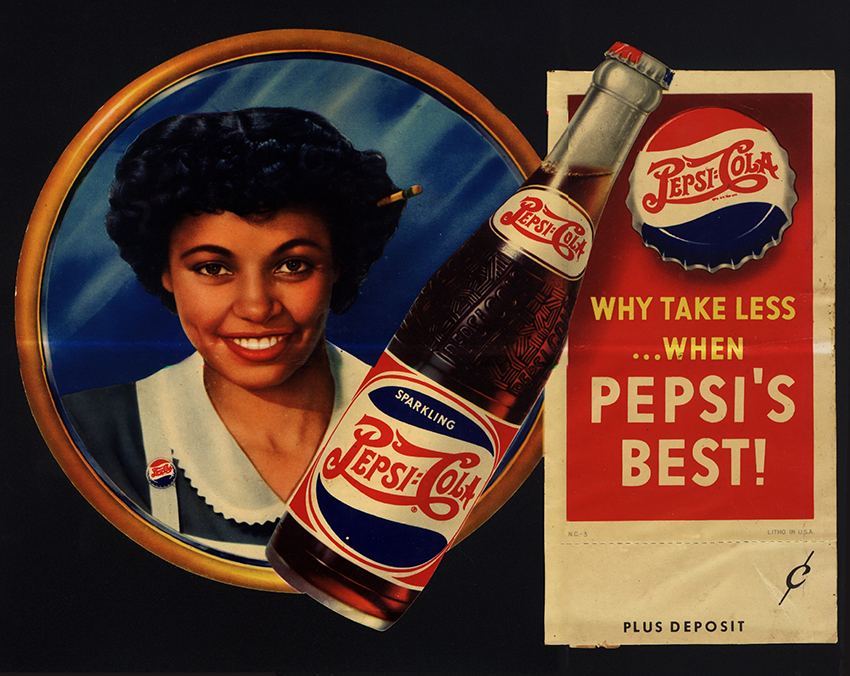
Pepsi Challenge Marketing Case Study
Nike’s “Just Do It” (1988) Marketing Campaign Case Study
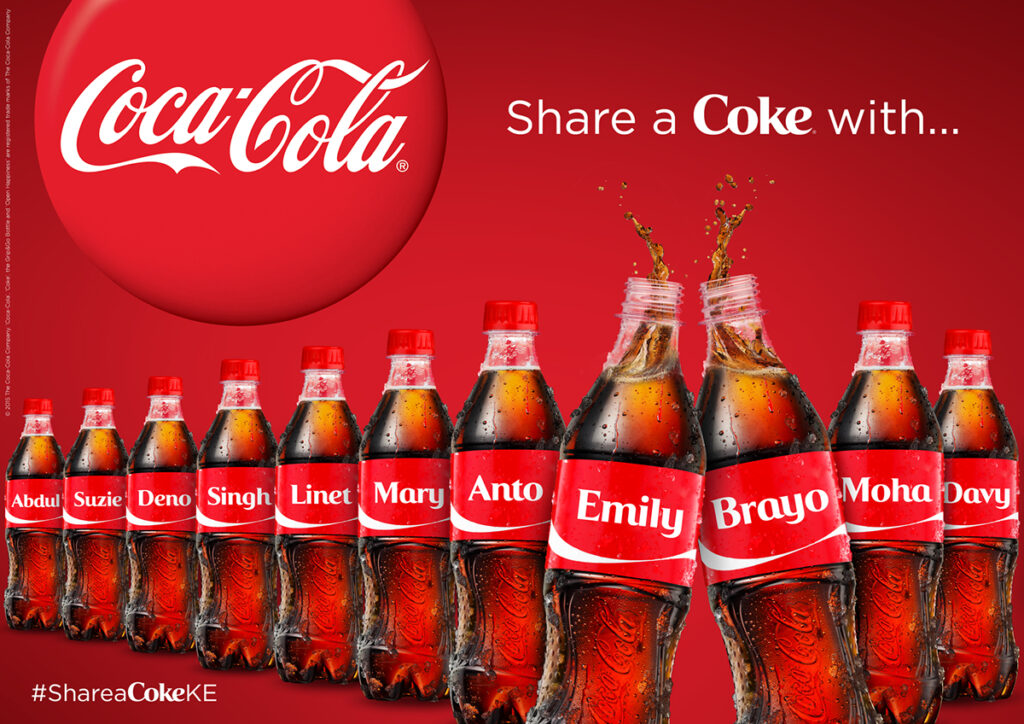
Coca-Cola’s “Share a Coke” Campaign Case Study
Leave a reply cancel reply.
Save my name, email, and website in this browser for the next time I comment.
- (+91) 9560 490 807
- [email protected]
- Haryana, INDIA
- Privacy Policy
Sign up for my newsletter to get latest updates. Do not worry, we will never spam you.
- MAXIMUM IMPACT. All rights reserved.
.png)
HOW 'OPEN HAPPINESS' LIT UP A WORLD IN RECESSION
"Marketing is not just about selling a product; it's about telling a story. With 'Open Happiness', Coca-Cola didn't just offer a beverage, they served a reminder that in the midst of chaos, joy is a choice we can all make. Great campaigns resonate because they touch the human soul."
In 2009, the world was grappling with the aftershocks of the most severe global financial crisis since the Great Depression, leading to widespread economic downturns, job losses, and a pervasive atmosphere of uncertainty.
Many industries, seeking to navigate this challenging landscape, struggled to maintain consumer trust and engagement.
Against this bleak backdrop, Coca-Cola's "Open Happiness" campaign emerged not merely as a marketing strategy but as a timely and poignant reflection of humanity's enduring spirit, offering a beacon of hope and positivity amidst the prevailing gloom.
A REMINDER OF HAPPINESS

In an era marked by financial upheaval and widespread despondency, the landscape of global advertising experienced a shift. Brands were faced with the challenge of resonating with an audience burdened by economic hardships.
Coca-Cola's "Open Happiness" campaign, launched in this milieu, stood out as a luminary example of empathetic branding.
At its heart, the campaign's message was simple yet profound. It sought to remind people that even in the face of adversity, the feeling of happiness was not only attainable but just a sip away.
This ethos was not exclusive to Coca-Cola . During the Great Depression, for instance, Procter & Gamble maintained its advertising budget, focusing on trust and product reliability, thereby securing customer loyalty in challenging times.
Similarly, in the early 2010s, Hyundai's Assurance Program assured potential buyers that if they lost their jobs, they could return their new cars, reflecting an understanding of contemporary fears.
Another apt example is Airbnb's "Belong Anywhere" campaign, which, amidst growing xenophobia and global unrest, championed inclusivity and community.
Such campaigns underscore a significant principle: in times of adversity, brands that weave empathy and genuine human connection into their narratives not only survive but often thrive, leaving a lasting impact on consumers' memories.
THE MASTERS BEHIND ‘OPEN HAPPINESS’
.webp)
The inception of Coca-Cola's "Open Happiness" campaign was a confluence of strategic thinking, creative ingenuity, and profound understanding of the global zeitgeist.
The task was entrusted to Wieden+Kennedy, an advertising agency renowned for its innovative and disruptive campaigns.
The agency, founded by Dan Wieden and David Kennedy, had a storied history of delivering memorable brand narratives, and the challenge posed by Coca-Cola during a global recession was right up their alley.
Under the leadership of Dan Wieden, a team of gifted creative professionals set to work.
They began by immersing themselves in extensive market research, seeking to understand the emotional pulse of consumers across diverse geographies. The insights gathered were clear: people were yearning for positivity, a refuge from the relentless barrage of bleak news.
Building on this, the team worked tirelessly to conceptualize a campaign that would resonate universally. The iconic phrase "Open Happiness" was not born overnight but was the result of countless brainstorming sessions, revisions, and refinements. The visual elements, drawing inspiration from the curvaceous Coca-Cola bottle, required careful crafting to seamlessly merge with the narrative.
INSPIRATION FROM A BOTTLE
.webp)
The Coca-Cola bottle, with its unmistakable contour, has a rich history dating back to its inception in the early 20th century.
Designed in 1915 by the Root Glass Company of Terre Haute, Indiana, the bottle's unique silhouette was intended to be discernible even if broken or touched in the dark. This design, known as the "hobbleskirt" or "Mae West" due to its curvaceous shape, became an emblem of the brand, distinguishing Coca-Cola in an age where imitations and counterfeit products were rampant.
It was against this backdrop of a century-old design legacy that the "Open Happiness" campaign emerged.
The tagline wasn't merely an attempt at clever wordplay. It was a conscious effort to evoke the joy and nostalgia associated with the Coca-Cola brand, tying it to the iconic bottle's shape that had become synonymous with shared moments of joy.
The contour, reminiscent of a smile, was more than just a design element; it was a symbol of the brand's commitment to spreading happiness for over a hundred years.
A MULTIFACETED APPROACH
.webp)
Coca-Cola's "Open Happiness" campaign, with its expanse across diverse mediums, was a masterclass in holistic brand storytelling.
Television, traditionally a powerful medium for the brand, saw a series of heartwarming commercials. One such ad featured the "Happiness Truck," a whimsical vehicle that roamed city streets, surprising passersby with complimentary bottles of Coca-Cola, turning mundane urban landscapes into arenas of spontaneous joy.
In the print realm, vibrant visuals showcased exuberant individuals, families, and friends sharing Coca-Cola, with the unmistakable bottle often taking center stage. These images, often accompanied by the succinct yet evocative "Open Happiness" tagline, graced magazines and billboards worldwide.
The digital frontier was not neglected either.
Short, shareable clips and interactive content proliferated across social media platforms and websites, inviting viewers to partake in the happiness narrative. Moreover, Coca-Cola leveraged the burgeoning power of influencer partnerships, integrating celebrity endorsements seamlessly into their online content.
Retail spaces, too, became immersive extensions of the campaign. In-store displays, interactive kiosks, and promotional events turned shopping experiences into moments of delight, often echoing the campaign's overarching theme of finding happiness in the everyday.
THE ICONIC 'HAPPINESS TRUCK'

The allure of the "Happiness Truck" commercial was embedded in its simplicity.
Drawing on the universal language of generosity and surprise, it resonated deeply across varied cultures and demographics. As the truck made its way through urban thoroughfares, its joyful intent unfolded. In the words of American author and cultural critic, Clark, "The city is a fact in nature, like a cave, a run of mackerel or an ant-heap. But it is also a conscious work of art." This commercial turned that "conscious work of art" into a canvas of shared joy and community bonding.
Coca-Cola's approach was encapsulated perfectly by Angel's timeless words, "I've learned that people will forget what you said, people will forget what you did, but people will never forget how you made them feel." Through the "Happiness Truck," viewers were transported to moments of genuine human connection and unbridled joy, the essence of what Coca-Cola aimed to convey.
This ad became a touchstone, a symbol of the campaign's central tenet, as summed up by another adage, often attributed to Pliny the Elder, "Ex Africa semper aliquid novi" - "Out of Africa, there's always something new." Here, it wasn’t about geographical discovery, but the unearthing of new moments of happiness in familiar urban landscapes.
RISING ABOVE THE TIDE
.webp)
In the late 2000’s, many established beverage brands, accustomed to consistent growth and loyalty, were confronted with diminishing sales figures and waning brand enthusiasm. Consumer spending was reined in, leading to a preference for essential commodities over branded indulgences.
PepsiCo, for instance, faced challenges with its flagship soda, Pepsi, experiencing a decline in its market position. Dr. Pepper and Snapple, despite their longstanding history, too, felt the squeeze as consumers became more frugal and discerning. Niche beverage companies, peddling luxury or non-essential drinks, witnessed significant contractions in their consumer base.
In this challenging milieu, Coca-Cola's "Open Happiness" campaign was a beacon of astute marketing acumen. By presenting not just a beverage, but a message of hope, resilience, and simple joy, Coca-Cola tapped into the universal human yearning for positivity amid adversity. Their strategic pivot from mere product advertising to emotional storytelling provided a refreshing contrast to the often bleak narratives of the times.
The result was telling. While many of its competitors grappled with stalling momentum, Coca-Cola experienced a notable uplift in sales, defying the prevailing economic trends.
A STAR-STUDDED AFFAIR
.webp)
With the "Open Happiness" campaign, Coca-Cola astutely recognized the potential of such associations in an era dominated by celebrity culture.
Brad Pitt, with his global stature and philanthropic endeavors, lent an air of authenticity and gravitas to the campaign. His portrayal not just as a Hollywood icon, but as an individual finding joy in everyday moments, made the campaign's message universally relatable.
Zac Efron, a rising star of that period, appealed to a younger demographic. His youthful exuberance and relatability became instrumental in communicating the brand's message to a generation coming of age amidst economic uncertainty. By aligning with Efron, Coca-Cola effortlessly bridged generational gaps, presenting its century-old beverage as both timeless and relevant.
Katy Perry, a pop sensation known for her vivacious and colorful persona, brought an effervescence to the campaign. Her inclusion resonated particularly with the global music audience, turning the campaign's messaging into a lyrical exploration of happiness.
Beyond mere endorsements, these celebrities were integrated into the campaign's narrative, embodying its ethos rather than just promoting it.
They appeared in commercials, print ads, and even participated in interactive digital content, creating a multi-dimensional engagement with the audience.
Wikipedia - Coca-Cola
Britannica - The Coca-Cola Company
Published On
Last updated.

Brand Marketing
Music + ads: coke's 'open happiness'.

Inspiration meets innovation at Brandweek , the ultimate marketing experience. Join industry luminaries, rising talent and strategic experts in Phoenix, Arizona this September 23–26 to assess challenges, develop solutions and create new pathways for growth. Register early to save .
NEW YORK “From our perspective, it was a logical choice to inspire people through music,” said Coca-Cola global music marketing manager Umut Ozaydinli in the beginning of a case study on Coca-Cola’s “Open Happiness” campaign at the Adweek and Billboard Music and Advertising Conference here today.
In an ad climate with declining TV viewership and increasing time spent online and consuming music, Coca-Cola looked to create a song that would be the central piece of an innovative global marketing strategy.
To do this the company tapped five artists — Gnarls Barkley’s Cee-Lo, Patrick Stump from Fall Out Boy, Brendon Urie from Panic at the Disco, Travis McCoy from Gym Class Heroes and newcomer Janelle Monae — to collaborate on a commissioned single. The track was produced by Polow Da Don and Butch Walker.
Jonathan Daniel of Crush Music Media Management said the artistic collaboration was easy due to the mutual respect between all artists involved. Working Coca-Cola’s trademarked five-note whistle into the track as the most difficult musical challenge for the group, he said.
“Open Happiness” then became the creative spearhead of Coca-Cola’s global advertising campaign.
Activation tactics such as imprinting artists’ names on 300 million Coke cans in the U.K. and France benefited the artists and allowed Coca-Cola to engage audiences around the music. Warner Music Group handled international distribution to music retailers.
One of the challenges cited by Camille Hackney, svp of brand partnerships and commercial licensing at Atlantic Records, was distributing to all 200 countries that carry the Coke brand. “We’re getting there,” said Hackney, but that there were “certain places where no commerce [in music] exists.”
Social networks also played an important role in the campaign. Coca-Cola was both surprised and pleased when the track was somehow leaked onto YouTube three weeks prior to the campaign. “We were really happy, people started making their own videos with the Coke brand in it,” said Ozaydinli.
In distribution of the track however, there was some disagreement between partners. Ozaydinli said Coca-Cola originally wanted to give the “Open Happiness” single away free, and that Coke had little ambition to create a revenue stream from the recording. It was clear that Atlantic was opposed to this strategy. A deal was reached for the track involving a 50/50 split of the revenue with Warner Music Group and an artist-friendly work-for-hire arrangement where the artists participated in the writing revenue. Daniel said that the deal was “the most generous a company has ever been in a work-for-hire situation.”
The marketer retains ownership of publishing rights, and the master is owned by Atlantic, but it can only be used in situations approved by Coke. The beverage giant also owns all rights associated with their five-note hook that was created by New York music and sound design firm Human, and is part of all brand communications.
Hackney said that ownership had not been a huge part of negotiations, and that the deal had been structured in a very different way because “both parties wanted to work together.” It was clear that all involved in the project were excited by the results.
Ozaydinli emphasized several times that it was critical to create a partnership that everybody was happy to be involved with, otherwise it would become “just be a deal falling apart elegantly.”
“Breaking Acts Into Spots”
“Advertising Is the New Radio”
Source: Billboard.com
Jack Rutledge, Billboard


Product details

Teaching and learning

The Economic Times daily newspaper is available online now.
From 'open happiness' to 'taste the feeling': why coca-cola changed its strategy.
Coca-Cola's aggressive new campaign is a radical departure from the previous one. We uncover what led to this change.

India is abandoning this healthy habit in droves
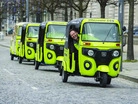
Ola Cabs is winding down its struggling international business
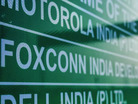
Here is what it takes to get a job at an Apple supplier

Where is Flipkart’s long-in-the-making IPO?

This waste recycler vs. contraceptive maker legal tussle has a Mahadev scam accused Tibrewala twist

INR10,000 crore HDFC Credila deal: Why PE funds are upbeat on the education-loan market
Find this comment offensive?
Choose your reason below and click on the Report button. This will alert our moderators to take action
Reason for reporting:
Your Reason has been Reported to the admin.

To post this comment you must
Log In/Connect with:
Fill in your details:
Will be displayed
Will not be displayed
Share this Comment:
Uh-oh this is an exclusive story available for selected readers only..
Worry not. You’re just a step away.

Prime Account Detected!
It seems like you're already an ETPrime member with
Login using your ET Prime credentials to enjoy all member benefits
Log out of your current logged-in account and log in again using your ET Prime credentials to enjoy all member benefits.
You’re reading this story from ET newspaper.
Unlock epaper & other members-only benefits., new financial year offer: flat 20% off, enjoy reading for special offer, your current plan does not offer access to newspaper articles, upgrade to unlock complete access to exclusive stories, epaper & all market tools..

Exclusive Economic Times Stories, Editorials & Expert opinion across 20+ sectors
Stock analysis. Market Research. Industry Trends on 4000+ Stocks
Get 1 Year Complimentary Subscription of TOI+ worth Rs.799/-
Stories you might be interested in
Notesmyfoot
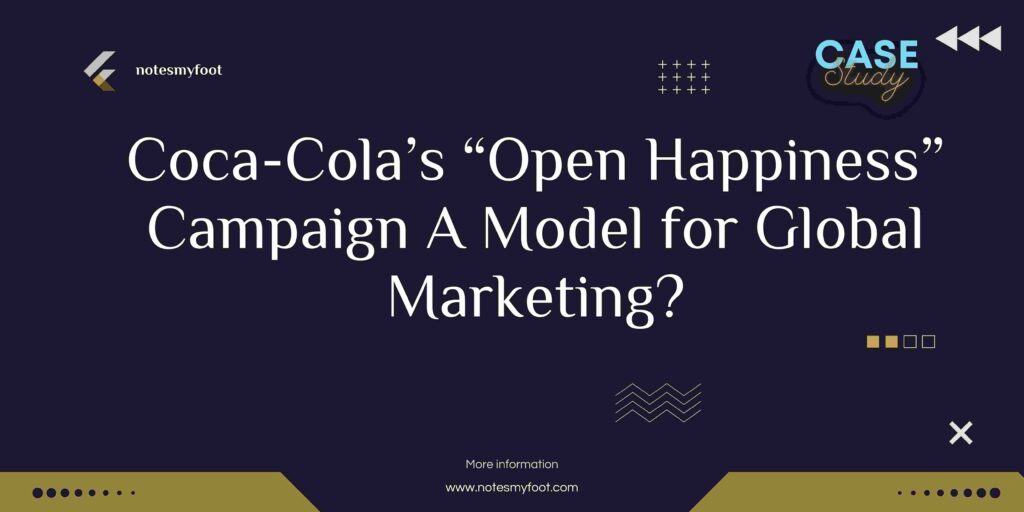
Case study : Coca-Cola’s “Open Happiness” Campaign A Model for Global Marketing?
In the world of marketing, Coca-Cola has established itself as a powerhouse brand, consistently maintaining its No.1 position among global brands. One of the key factors contributing to its success is the strategic use of advertising campaigns. This blog post aims to study the branding strategies adopted by Coca-Cola over the years, with a specific focus on its iconic “Open Happiness” campaign. We will delve into the background of the campaign, explore its global platform, discuss its outcomes, and contemplate the road ahead for Coca-Cola.
Background Note:
Coca-Cola has a rich history of captivating consumers with its advertising campaigns. These campaigns have played a vital role in shaping the perception of the brand and maintaining its strong market presence. By understanding the background of Coca-Cola’s advertising strategies, we can gain insights into the company’s approach to global marketing.
The 'Coke Side Of Life' Concept:
Before the “Open Happiness” campaign, Coca-Cola introduced the “Coke Side Of Life” concept. This concept aimed to portray Coca-Cola as a source of optimism, joy, and togetherness. The campaign featured vibrant visuals, catchy jingles, and relatable stories, all of which resonated with consumers worldwide. The success of this concept set the stage for the evolution of Coca-Cola’s marketing campaigns.
The "Open Happiness" Concept:
Building upon the foundation of the “Coke Side Of Life” concept, Coca-Cola launched the “Open Happiness” campaign. This campaign emphasized the idea that Coca-Cola is more than just a beverage; it is a catalyst for creating moments of happiness and connection. The campaign showcased people from diverse backgrounds coming together, sharing laughter, and enjoying Coca-Cola. Through heartwarming advertisements, Coca-Cola aimed to evoke positive emotions and forge an emotional bond with its audience.
Global Platform:
One of the strengths of Coca-Cola’s “Open Happiness” campaign is its global platform. Recognizing the importance of a consistent message across different markets, Coca-Cola tailored its advertisements to resonate with people from various cultures and backgrounds. By leveraging universal themes of happiness and togetherness, Coca-Cola effectively transcended language barriers and reached a global audience.

The Outcome:
The “Open Happiness” campaign has been widely regarded as a success for Coca-Cola. It has not only reinforced the brand’s position as a symbol of joy but also helped Coca-Cola maintain its No.1 position among global brands. The campaign’s memorable advertisements, catchy tagline, and emotional appeal have left a lasting impression on consumers worldwide.
The Road Ahead:
Looking to the future, Coca-Cola faces the challenge of keeping its advertising campaigns relevant and engaging in an ever-evolving marketing landscape. To make the “Open Happiness” campaign more effective, Coca-Cola could explore innovative digital marketing strategies, collaborate with influential social media influencers, and continue to adapt its messaging to resonate with the changing preferences of consumers.
Conclusion:
Coca-Cola’s “Open Happiness” campaign stands as a model for global marketing, showcasing the brand’s ability to create emotional connections with consumers worldwide. Through its strategic branding strategies and powerful advertising campaigns, Coca-Cola has consistently maintained its No.1 position in the global market. As the company charts its path forward, it will continue to leverage the success of the “Open Happiness” campaign while embracing new opportunities and challenges in the dynamic world of marketing. Also get to know about Mercedes-Benz India : Approach to Capturing a Younger Segment case study
Automated page speed optimizations for fast site performance
Research on Emotional Marketing Based on the Case Study of Coca-Cola
- Conference paper
- First Online: 27 September 2022
- Cite this conference paper
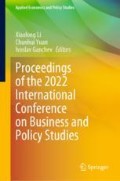
- Weichen Gao 7
Part of the book series: Applied Economics and Policy Studies ((AEPS))
Included in the following conference series:
- International Conference on Business and Policy Studies
1436 Accesses
Indeed, due to the rapid advances of the times and the development of the Internet, the way in which marketing is addressed today has changed and consumers have the opportunity to “generate” their own information about products and brands, as well as to spread and share it through copying, browsing and etc. Consumers 'purchasing decisions are more susceptible, as the increase in ways of gaining and generating multitudinous information and some might be deceptive—because of the decreasing cost of sharing, the content and quality of consumer-generated marketing messages are becoming increasingly difficult to control as a result. Emotion acts as one of the factors contributing to changes in behaviors and actions, has been widely studied in the past few decades [ 9 ]. Realistically, the marketing messages that are spread by consumers seem to share a common characteristic of trying to achieve communication by evoking emotional resonance in consumers. We found that emotion will not only help to explore and reveal the relationship between the emotionality of the message content and the sharing behavior but also provides more valuable and relevant suggestions and insights for enterprises to carry out new media marketing, as it distinguishes marketing messages from ordinary messages [ 2 ].
- Emotional marketing
- Business management
This is a preview of subscription content, log in via an institution to check access.
Access this chapter
- Available as PDF
- Read on any device
- Instant download
- Own it forever
- Available as EPUB and PDF
- Compact, lightweight edition
- Dispatched in 3 to 5 business days
- Free shipping worldwide - see info
- Durable hardcover edition
Tax calculation will be finalised at checkout
Purchases are for personal use only
Institutional subscriptions
Babin, B., Darden, W., University, L., Shreveport, L., Babin, L.: Negative emotions in marketing research. J. Bus. Res. 42 (3), 271–285 (1998). https://www.sciencedirect.com/science/article/pii/S0148296397001240 . Accessed 1 May 2021
Berger, J.: Contagious, pp. 112–146. Simon & Schuster Paperbacks, New York (2016)
Google Scholar
Berger, J., Schwartz, E.: What drives immediate and ongoing word of mouth? J. Market. Res. 48 (5), 869–880 (2011). https://doi.org/10.1509/jmkr.48.5.869 . Accessed 1 May 2021
Berger, J., Milkman, K.: Emotion and virality: what makes online content go viral? GfK Mark. Intell. Rev. 5 (1), 18–23 (2013). https://www.researchgate.net/publication/345698319_Emotion_and_Virality_What_Makes_Online_Content_Go_Viral . Accessed 2 May 2021
Coca-Cola (2016). Share a Coke, Share a Feeling [video]. Accessed 8 May 2021
Coca Cola Cases. https://cocacolabranding.wordpress.com/emotionalbranding-strategy-how-to-apply/ . Accessed 9 May 2021
Consoli, D.: A new concept of marketing: the emotional marketing. BRAND. Broad Res. Account. Negot. Distrib. 1 (1), 1–8 (2010). https://www.edusoft.ro/brain/index.php/brand/article/view/76/170 . Accessed 8 May 2021
Forgas, J., George, J.: Affective influences on judgments and behavior in organizations: an information processing perspective. Organ. Behav. Human Decis. Process. 86 (1), 3–34 (2001). https://www.sciencedirect.com/science/article/pii/S0749597801929711 . Accessed 1 May 2021
Gaur, S., Herjanto, H., Makkar, M.: Review of emotions research in marketing, 2002–2013. J. Retail. Consum. Serv. 21 (6), 917–923 (2014). https://www.sciencedirect.com/science/article/pii/S0969698914001179 . Accessed 1 May 2021
Grundey, D.: Experiential marketing vs. traditional marketing: creating rational and emotional liaisons with consumers. Romanian Econ. J. 11 (29), 133–151 (2008). http://citeseerx.ist.psu.edu/viewdoc/download?doi=10.1.1.190.7028&rep=rep1&type=pdf . Accessed 10 May 2021
Hatfield, E., Cacioppo, J., Rapson, R.: Emotional contagion. Current Direct. Psychol. Sci. 2 (3), 96–100 (1993). https://doi.org/10.1111/1467-8721.ep10770953 . Accessed 4 May 2021
Howard, D., Gengler, C.: Emotional contagion effects on product attitudes. J. Consum. Res. 28 (2), 189–201 (2001). https://academic.oup.com/jcr/article/28/2/189/1899159 . Accessed 4 May 2021
Kissler, J., Herbert, C., Peyk, P., Junghofer, M.: Buzzwords: early cortical responses to emotional words during reading. Psychol. Sci. 18 (6), 475–480 (2007). https://doi.org/10.1111/j.1467-9280.2007.01924.x . Accessed 2 May 2021
Lamelas, J.: Marketing: The Heart and the Brain of Branding, pp.115–124 (2018)
Lang, P., Levin, D., Miller, G., Kozak, M.: Fear behavior, fear imagery, and the psychophysiology of emotion: the problem of affective response integration. J. Abnormal Psychol. 92 (3), 276–306 (1983). https://psycnet.apa.org/record/1983-32159-001 . Accessed 4 May 2021
Liu, J., Li, C., Ji, Y., North, M., Yang, F.: Like it or not: the fortune 500's Facebook strategies to generate users’ electronic word-of-mouth. Comput. Human Behav. 73 , 605–613. https://www.sciencedirect.com/science/article/pii/S0747563217302285?via%3Dihub . Accessed 11 May 2021
O’Shaughnessy, J., O’Shaughnessy, N.: The Marketing Power of Emotion, pp. 1–24. Oxford University Press, Oxford (2003)
Peters, K., Kashima, Y., Clark, A.: Talking about others: emotionality and the dissemination of social information. Eur. J. Soc. Psychol. 39 (2), 207–222 (2009). https://www.researchgate.net/publication/229610591_Talking_about_others_Emotionality_and_the_dissemination_of_social_information . Accessed 5 May 2021
Penz, E., Hogg, M.: The role of mixed emotions in consumer behaviour. Eur. J. Mark. 45 (1/2), 104–132 (2011). https://www.researchgate.net/publication/231520686_The_role_of_mixed_emotions_in_consumer_behaviour_Investigating_ambivalence_in_consumers%27_experiences_of_approach-avoidance_conflicts_in_online_and_offline_settings . Accessed 11 May 2021
Plutchik, R., Kellerman, H.: Emotion: Theory, Research, and Experience: Chapter 14 A Structural Model of Emotion and Personality: Psychoanalytic and Sociobiological Implications. Academic Press, New York (1980)
Podoynitsyna, K., Van der Bij, H., Song, M.: The role of mixed emotions in the risk perception of novice and serial entrepreneurs. Entrepreneursh. Theory Pract. 36 (1), 115–140 (2012). https://doi.org/10.1111/j.1540-6520.2011.00476.x . Accessed 11 May 2021
Hill, R.P., Mazis, M.B.: Measuring emotional responses to advertising. In: Lutz, R.J., Provo, U.T. (eds.) NA - Advances in Consumer Research, vol. 13, pp. 164–169. Association for Consumer Research (1986)
Schachter, S., Singer, J.: Cognitive, social, and physiological determinants of emotional state: erratum. Psychol. Rev. 70 (1), 121–122 (1963). https://psycnet.apa.org/record/1963-06064-001 . Accessed 4 May 2021
Shaver, P., Schwartz, J., Kirson, D., O'Connor, C.: Emotion knowledge: further exploration of a prototype approach. J. Personal. Soc. Psychol. 52 (6), 1061–1086 (1987). https://psycnet.apa.org/record/1987-28161-001 . Accessed 4 May 2021
Taylor, R.: Marketing strategies: gaining a competitive advantage through the use of emotion. Competitiv. Rev. 10 (2), 146–152 (2000). https://doi.org/10.1108/eb046407/full/html . Accessed 7 May 2021
Tracy, J., Randles, D.: Four models of basic emotions: a review of Ekman and Cordaro, Izard, Levenson, and Panksepp and Watt. Emotion Rev. 3 (4), 397–405 (2011). https://doi.org/10.1177/1754073911410747 . Accessed 3 May 2021
Vaish, A., Grossmann, T., Woodward, A.: Not all emotions are created equal: the negativity bias in social-emotional development. Psychol. Bull. 134 (3), 383–403 (2008). https://psycnet.apa.org/record/2008-04614-002?CheckAccess=1 . Accessed 5 May 2021
Zemack-Rugar, Y., Bettman, J., Fitzsimons, G.: The effects of nonconsciously priming emotion concepts on behavior. J. Personal. Soc. Psychol. 93 (6), 927–939 (2007). https://psycnet.apa.org/record/2007-17941-002?CheckAccess=1 . Accessed 5 May 2021
Zhu, H., Zhang, X.: Emotional marketing: How do soft drink bottle ads resonate with audiences? In: Business Cases-Sales & Marketing - Management Edition, pp.78–81 (2018)
Download references
Author information
Authors and affiliations.
University of St Andrews, College Gate, St Andrews, KY16 9AJ, UK
Weichen Gao
You can also search for this author in PubMed Google Scholar
Corresponding author
Correspondence to Weichen Gao .
Editor information
Editors and affiliations.
Department of Postal Management, Beijing University of Posts and Telecommunications, Beijing, China
Xiaolong Li
School of Economics and Management, Beijing University of Posts and Telecommunications, Beijing, China
Chunhui Yuan
Queen Mary University of London, London, UK
Ivoslav Ganchev
Rights and permissions
Reprints and permissions
Copyright information
© 2022 The Author(s), under exclusive license to Springer Nature Singapore Pte Ltd.
About this paper
Cite this paper.
Gao, W. (2022). Research on Emotional Marketing Based on the Case Study of Coca-Cola. In: Li, X., Yuan, C., Ganchev, I. (eds) Proceedings of the 2022 International Conference on Business and Policy Studies. CONF-BPS 2022. Applied Economics and Policy Studies. Springer, Singapore. https://doi.org/10.1007/978-981-19-5727-7_30
Download citation
DOI : https://doi.org/10.1007/978-981-19-5727-7_30
Published : 27 September 2022
Publisher Name : Springer, Singapore
Print ISBN : 978-981-19-5726-0
Online ISBN : 978-981-19-5727-7
eBook Packages : Economics and Finance Economics and Finance (R0)
Share this paper
Anyone you share the following link with will be able to read this content:
Sorry, a shareable link is not currently available for this article.
Provided by the Springer Nature SharedIt content-sharing initiative
- Publish with us
Policies and ethics
- Find a journal
- Track your research

Case Study Of Coca-Cola: What Led To Its Success?
Aashita Singh
Updated on: August 23, 2023
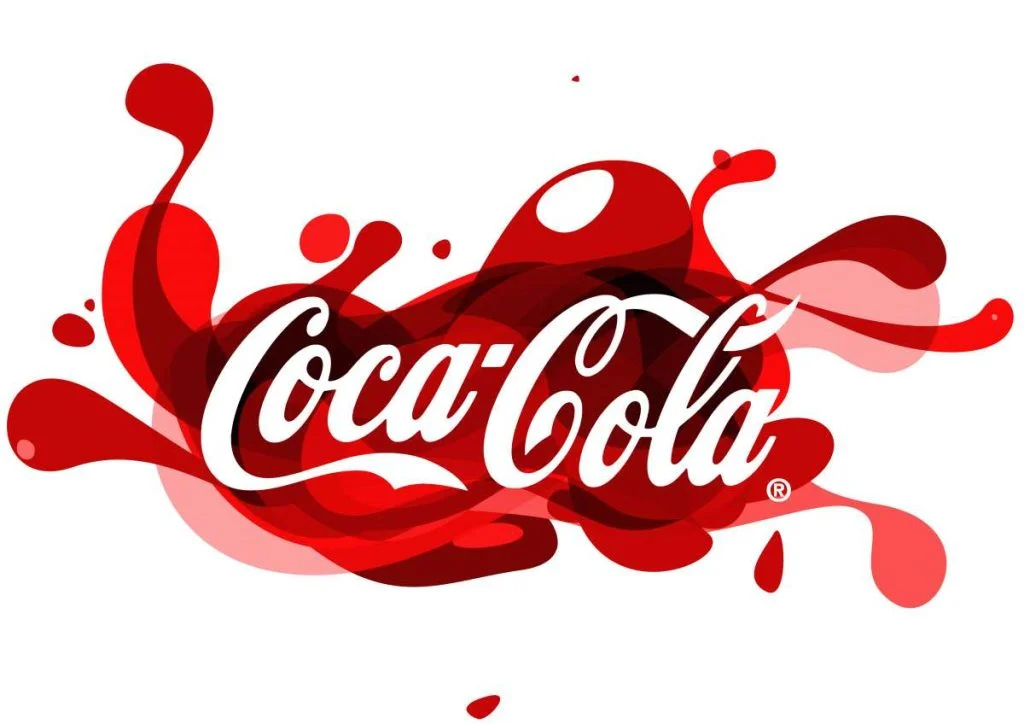
In a world brimming with countless beverages, one name stands tall – Coca-Cola. This fizzy elixir has captured the hearts and palates of billions around the globe, becoming a symbol of refreshment, happiness, and, of course, capitalism. The story of Coca-Cola is not just a tale of sweet bubbles, it’s a narrative of resilience, innovation, and the ability to adapt to the ever-changing tastes of consumers. So let’s pop the top and delve into the remarkable case study of Coca-Cola and what led to its success, and the hurdles it has faced.

Coca-Cola’s Profile:
The year was 1886, and the place was Atlanta, Georgia, where the Coca-Cola saga begins with Dr. John S. Pemberton , a pharmacist with a penchant for experimentation. In the heart of his laboratory, he mixed together a curious blend of coca leaf extract and kola nut, creating a syrupy concoction that he believed had medicinal properties. This brew, initially intended as a patent medicine to soothe headaches and fatigue. But, later on it was mixed with carbonated water to create a fizzy drink. It was first sold at Jacob’s Pharmacy on May 8, 1886.
It was Frank M. Robinson , Dr. Pemberton’s bookkeeper, who gave the concoction its iconic name. He played a pivotal role in the brand’s early history by suggesting the name Coca-Cola and designing the now-famous logo.
- He believed that “Coca-Cola” conveyed a sense of euphony and captured the drink’s two main ingredients.
- He even penned the flowing script of the Coca-Cola logo that remains an indelible part of the brand’s identity.
Coca-Cola Case Study to Rise to Prominence:
Despite Pemberton’s vision, financial difficulties led to the sale of Coca-Cola formula in 1887 for a mere $2,300.
Its key points:
- Asa Griggs Candler , a visionary businessman, acquired the rights to Coca-Cola and embarked on a mission to make it a national sensation.
- His aggressive marketing tactics and bold advertising campaigns set the stage for Coca-Cola’s expansion.
- In 1894, Candler incorporated The Coca-Cola Company and pushed it for widespread distribution.
- Soon, the beverage was available in every U.S state, solidifying its position as an American favorite.
- Its sales increased by a phenomenal percentage because of Candler efforts.
- The evolution of Coca-Cola would not be complete without mentioning the groundbreaking contour bottle, introduced in 1915.
- It is said to be the stroke of genius – the contour bottle.
- Designed to be distinctively recognizable even in the dark or shattered into pieces.
- This bottle not only protected the secret formula but also became a symbol of Coca-Cola’s commitment to quality.
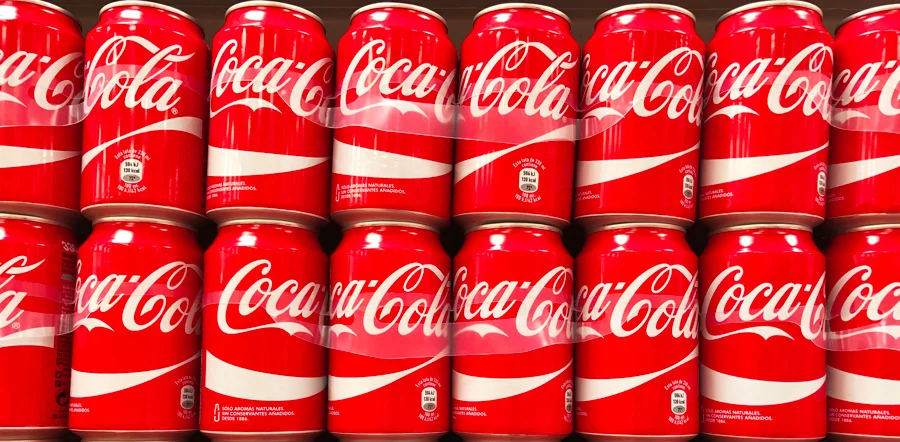
- This curvaceous bottle not only protected the secret formula of the brand itself.
- This distinctive packaging contributed to Coca-Cola’s worldwide recognition.
NOTE: We have detailed article about various functions of packaging ! Do check that out!!
In 1919, Ernest Woodruff bought up the company. Thereafter, Ernest’s sons continued to run the company until they transformed it into an international brand. The company was officially listed on the New York stock exchange in 1919 under the symbol KO.
Coca-Cola’s study to International Expansion:
- With success at home! Coca-Cola set its sights on global domination. During World War II, the company provided American troops with Coca-Cola, using slogans like “The pause that refreshes” to boost morale.
- After the war, international expansion continued, with bottling plants established worldwide.
- The introduction of Coca-Cola during the war created its demand in the international market.
- After that, Coca-Cola began establishing its partnerships with distributors and bottling companies all around the world.
- At present, the company operates and works in more than 200 countries and territories.
- Coca-Cola was launched in India in 1956, with the slogan “Refresh Yourself”.
Some key points of Coca-Cola Case Study:
- The company brand value was estimated at $97.9 billion in 2022.
- The brand logo can be recognized by 93% of the global population.
- For advertisement the company has used $ 4 billion annually for advertising, between the years 2015 to 2021, except for the year 2020 (due to pandemic).
- The company is recorded to have 225 bottling partners and 900 bottling plants globally.
- The brand employs around 700,000 employees.
- The company is recorded to have the same price between the years 1856-1959, at 5 cents.
- Offers beverage options of beverage to more than 200 brands to consumers worldwide.
- Partners with 24 million retail customer outlets.
- Company has a profile that includes $ 21 million brands.
- In 2022, Coca-Cola was the most valuable brand in the non-alcoholic area globally at $ 35.4 billion
Who Owns Coca-Cola?
There are various shareholders holding shares in the company.
Coco-Cola is a public listed company.
But the topmost are – Berkshire Hathaway, The Vanguard Group, BlackRock. However, the largest share of the brand company is said to be of Warren Buffett.
- Vanguard holding 8.16%
- Berkshire holding 9.25%
- BlackRock holding 4.58%
- Warren Buffett holding 9.30%
NOTE: You can our other success stories of business like Ola Case Study !
Coca-Cola’s Growth Strategy:
In the competitive landscape of the global beverage industry, Coca-Cola has managed to maintain its position as a market leader for over a century. let’s see one another part of Case Study of Coca-Cola-
Ever wonder how it has achieved such remarkable and enduring growth?
Let’s delve into Case Study of Coca-Cola’s growth strategy:
- Product Diversification: One of Coca-Cola’s core strategies for growth is product diversification. While Coca-Cola classic remains the flagship product, the company has expanded its portfolio to cater to changing consumer preferences. This includes offerings like Diet Coke, Coca-Cola Zero Sugar, and an array of flavored and non-carbonated beverages such as water, juices, and teas.
- Developed market focus: Coca-Cola has identified the importance of growing developing markets. Coco-Cola’s 70% of all beverages which are commercialized are being consumed in the developed world as compared to the developing world which is 30%.
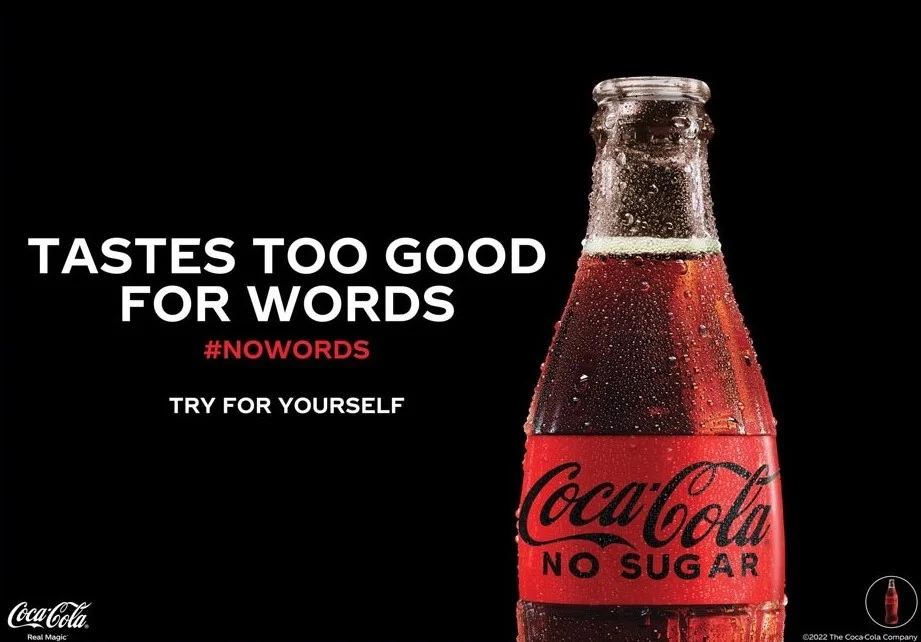
- Global Expansion: Coca-Cola’s global reach is a testament to its growth strategy. With operations in over 200 countries, the company has successfully expanded its footprint worldwide. It tailors its product to local tastes and preferences, ensuring relevance in diverse markets. Local partnerships and distribution networks are key components of this strategy, allowing Coca-Cola to penetrate even the most remote corners of the globe.
- Innovation and New markets: innovation is at the heart of Coca-Cola’s growth strategy. The company continually invests in research and development to create new beverages and packaging solutions. An example of this is the introduction of smaller-sized cans and bottles to address consumer health concerns about portion control and health.
- Branding and Marketing: Coca-Cola’s branding and marketing efforts are legendary. The company consistently runs high-impact advertising campaigns, often featuring celebrities and memorable slogans. Its marketing goes beyond mere product promotion, it aims to create emotional connections with consumers. For example, Share Coke Campaign.
- Sustainability and Corporate responsibility: Sustainability has become a vital component of Coca-Cola’s growth strategy. The company realized the importance of environmental and social responsibility. Started taking Initiatives such as reducing water usage, recycling programs, and commitments. Which contributes to their sustainable sourcing of ingredients to its long-term growth plans.
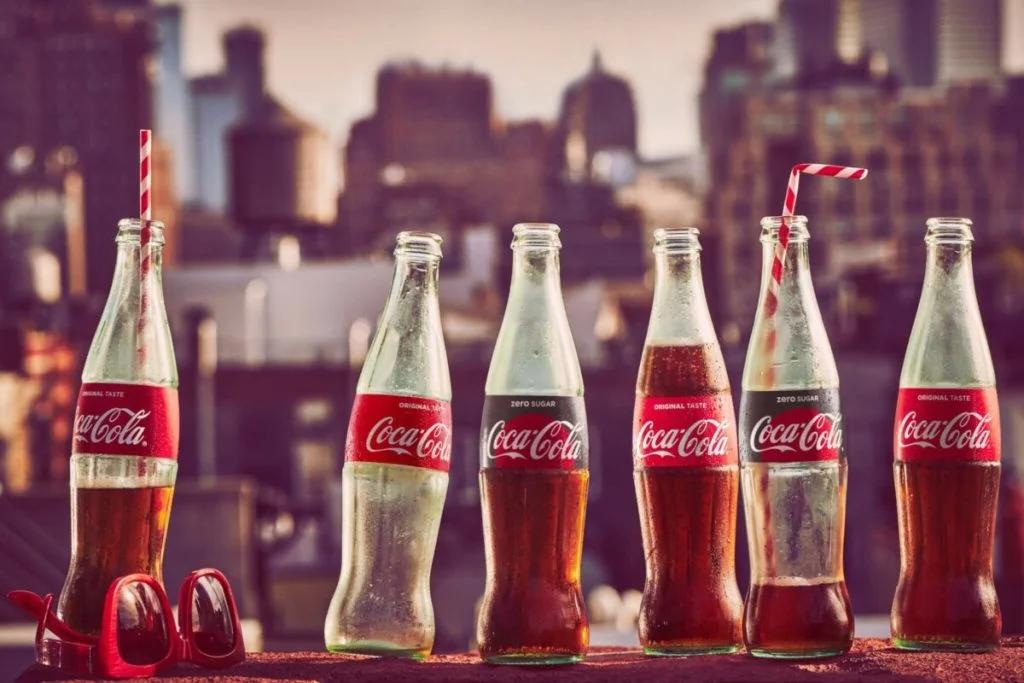
7. Strategic Partnerships: Coca-Cola strategically partners with various organizations and events to enhance its visibility and association with positive experiences. Sponsorships of major sports leagues, music festivals, and cultural events create opportunities for brand exposure and engagement with consumers.
Some memorable marketing campaigns of Coca-Cola that led to its success:
When it comes to marketing mastery, few brands can rival Coca-Cola. Over the years, this iconic beverage company has crafted some of the world’s most memorable and emotionally resonant advertising campaigns.
Some of them are:
- Share a Coke (2011) : It was a stroke of genius. Personalization of packaging was a popular marketing tactic of Coca Cola. It personalized its bottles and cans by printing the common names of individuals. The company encouraged people to find their names on the bottles. Also, it asked people to share the bottle or can of coke with their friends or family members.
- Taste the Feeling (2016) : It featured simple, relatable moments of people enjoying Coca-Cola and emphasized that the drink was for everyone, for every feeling, and for every day. The campaign included coke, diet coke and zero sugar coke.
- Thanda matlab Coca-Cola (2003): Aiming at the idea of refreshing drinks or Thanda, the campaign focuses its attention to local markets to win the people’s trust in the country. They made Coca-Cola and Thanda synonyms of each other.
- Open Happiness: In 2009, Coca-Cola introduced the “Open Happiness” campaign, this optimistic and cheerful message encouraged people to find happiness in the little moments and share them with others. The campaign included a variety of feel-good ads, catchy jingles, and interactive marketing initiatives, inviting consumers to be part of the happiness movement.
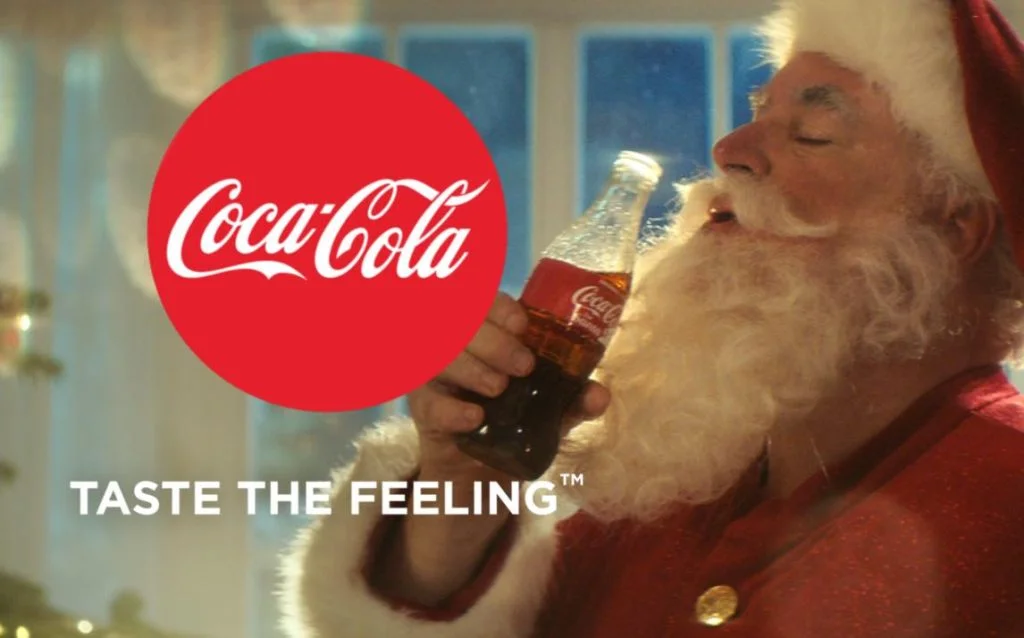
Case Study of Coca-Cola : How Coca-Cola makes money?
Coca-Cola, the world’s most iconic beverage, has a recipe for success that extends far beyond its secret formula. Its ability to generate substantial revenue is a testament to its diverse income streams and strategic business model.
Some of them are :
Core product sales: At its heart, Coca-Cola generates a significant portion of its revenue from the sales of its core products, including Coca-Cola zero sugar, and various flavored variants.
Diversified beverage portfolio: Coca-Cola isn’t just about cola anymore. The company has diversified its product portfolio to include a wide range of beverages, catering to diverse consumer tastes.
Non-Alcoholic ready-to-drink coffee: Coca-Cola has also ventured into the thriving market of non-alcoholic ready-to-drink coffee. With acquisitions like Costa Coffee and brands like Georgia Coffee, it has tapped into the caffeine cravings of consumers worldwide.
Partnerships and Licensing: Coca-Cola earns revenue through partnerships and licensing agreements. For example, it collaborates with other companies to produce co-branded products, like Coca-Cola with coffee, and it licenses its brand for use in various merchandise, from apparel to collectibles.
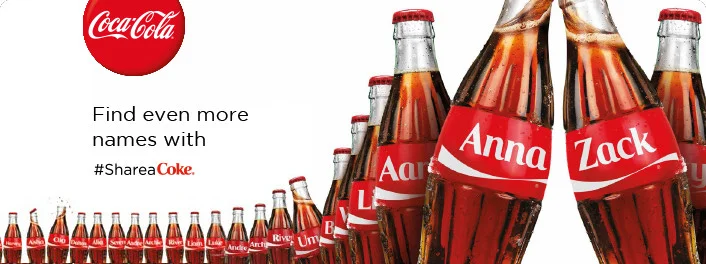
Sponsorships and Marketing Campaigns: Coca-Cola invests heavily in sponsorships of major events, sports leagues, and cultural activities. These partnerships provide brand exposure and promotional opportunities, driving consumer engagement and sales. The company’s marketing campaigns, often featuring celebrities and memorable commercials, also contributes to its revenue.
Challenges to Coca-Cola Success:
Coca-Cola, the behemoth of the beverage industry, is no stranger to challenges, despite its remarkable success. It faced numerous challenges that ranged from the preferences of consumers and concerns related to the environment.
Let’s explore the hurdles this iconic company faces on its path to sustained prosperity.
- Health and Wellness concerns: One of the most significant challenges Coca-Cola faces is the shift in consumer attitudes towards health and wellness. With growing awareness about the health risks associated with excessive sugar consumption, sales of sugary carbonated beverages like Coca-Cola classic have been under pressure.
- Sugar and Obesity: Linked to health concerns is the ongoing controversy surrounding the role of sugary beverages in the obesity epidemic. Coca-Cola, along with other soda manufacturers, has faced legal battles, health advocacy campaigns, and regulatory pressures. Responding to this challenge Coca-Cola has introduced low-calorie and reduced-sugar alternatives and actively participates in public health discussions.
- Changing consumer preferences: The ever-evolving consumer preferences pose a constant challenge. The desire for diverse and unique flavors, healthier options, and transparency in ingredient sourcing requires Coca-Cola to innovate continually.
- Competition in the beverage market: The beverage landscape is highly competitive, with numerous players vying for consumer attention. Coca-Cola competes not only with traditional rivals like PepsiCo but also faces competition from emerging beverage categories like energy drinks, ready-to-drink coffee, and plant-based beverages.
- Supply chain disruptions: Disruptions in the supply chain, whether due to natural disasters, pandemics, or other unforeseen events, can disrupt production and distribution. These disruptions may lead to temporary shortages or increased costs.
- Competition: The most prominent challenger to Coca-Cola’s throne is none other than PepsiCo and ThumbsUp. The rivalry between Coca-Cola and PepsiCo, often referred to as the “Cola Wars” is legendary. PepsiCo’s flagship product, Pepsi, competes head-to-head with Coca-Cola Classic. Both brands engage in intense marketing campaigns and strategic pricing to win the favor of consumers.
Future plans of Coca-Cola :
In a world of evolving tastes, shifting consumer preferences, and increasing environmental consciousness, Coca-Cola, the global beverage behemoth, is setting its sights on the future. Coca-Cola is planning to take a dynamic approach in marketing investment.
Coca-Cola’s future plans are a blend of sustainability, diversification, digital engagement, innovation, and a relentless focus on the consumer. As the world of beverages evolves, Coca-Cola is determined to stay ahead of the curve, refreshing not only the taste buds, but also the expectations for a more sustainable beverage experience.
The future, it seems, is bubbling with excitement for Coca-Cola.
Conclusion :
The Coca-Cola success story is a testament to the power of innovation, branding, and adaptability. It has conquered challenges, embraced change, and remained a symbol of joy for generations. The world may evolve, but the timeless allure of a Coke and a smile endures. By staying true to its core values while embracing change, Coca-Cola continues to fizz its way to the top.
Related Posts:
Contact Info: Axponent Media Pvt Ltd, 706-707 , 7th Floor Tower A , Iris Tech Park, Sector 48, Sohna Road, Gurugram, India, Pin - 122018
© The Business Rule 2024
Press Releases
Coca-cola study measures global happiness study reveals human contact brings most happiness in an increasingly digital world.
Study uncovers the source of happiness in 16 countries and reveals that sometimes all we need to make us happy is a hug!
ATLANTA--(BUSINESS WIRE)-- A study undertaken by Coca-Cola has uncovered the leading sources of happiness. The global study which covers 16 countries and four continents identifies what happiness means to different nationalities and reveals that, despite the rapid pace of growth in the virtual world, human contact wins hands down when it comes to happiness. People in all 16 countries agree real world contact with family and partners is a greater source of joy (77%) than virtual world alternatives.
Supporting this notion that human, rather than virtual interaction, is a greater source of pleasure; the biggest highlights of the day include catching up with loved ones in the evening (39%), eating with the family (22%) and chatting to friends or colleagues (17%). Modern alternatives such as watching TV (14%), connecting with others online (5%) and receiving the day's first text message (2%) paled in comparison.
"The results of the Coca-Cola Happiness Barometer show that staying connected with friends and family remains an important source of happiness for people around the world, and that this holds true across all continents and nationalities, including here in the U.S.," said Bill Kelly, Senior Vice President, Coca-Cola Trademark Brands, Coca-Cola North America. "Despite the online social networking phenomenon, nothing beats quality time with loved ones or simple pleasures such as sharing a Coke with our nearest and dearest to bring happiness in our lives."
The results also show that, despite the global economic woes, overall global happiness levels are high, with more than two thirds of people (67%) declaring they are satisfied with their lives.
When we do need cheering up, 38% of us turn to a night out with friends and more than one in five (22%) will give or receive a big, warm hug!
In the U.S., the study found that females are more likely than males to hug when they need cheering up (23% of females versus 15% of males). Females are also more than three times more likely than males to shop when they need some form of happiness (14% of females versus 4% of males, respectively). For teens in the U.S., music is important, with 18% saying it is a source of happiness and 22% saying listening to music is one of the happiest moments of the day.
To help interpret the results, Coca-Cola invited Dr. Richard Stevens, M.A., Ph. D., a social psychologist and author of Personal Worlds and Understanding the Self, who specializes in happiness and wellbeing, to provide his perspective on the findings. In his analysis, he noted, "While it is important to have enough money to live, income is a fairly irrelevant contributor to happiness. Without relationships, love, family or friendship, most people will not be content and no amount of money can fill this void."
Striving for celebrity did not come out as a popular source of happiness in the study. The results showed that, globally, people wouldn't choose fame and fortune to bring happiness, instead citing travelling around the world (37%), volunteering to help others (26%) and meeting the love of their life (12%) as being the key contributors to happiness.
"Despite our celebrity-driven culture, fame is not likely in itself to be a primary source of happiness," added Dr. Stevens. "Our real happiness depends much more on our basic sense of self, and connecting with other people, especially through love, care and kindness."
The study also found that drinking a Coke really does contribute to making people happy! More than half of the people surveyed (56%) cited the taste of Coca-Cola as something that makes them smile.
"Coca-Cola provides simple moments of pleasure throughout the day. Through this study we wanted to understand what else our consumers reach for in their quest for happiness," said Cristina Bondolowski, Senior Global Brand Director, Coca-Cola, The Coca-Cola Company. "We were especially pleased to see that it's the great taste of Coke that is still putting a smile on faces around the world, as it has done for nearly 125 years."
NOTES TO EDITORS
2) Philippines
3) Argentina
4) South Africa
6) United States
Survey says...
Happiness Barometer
About The Coca-Cola Company
The Coca-Cola Company (NYSE: KO) is the world's largest beverage company, refreshing consumers with more than 500 sparkling and still brands. Along with Coca-Cola(R), recognized as the world's most valuable brand, the Company's portfolio includes 12 other billion dollar brands, including Diet Coke(R), Fanta(R), Sprite(R), Coca-Cola Zero(R), vitaminwater, POWERADE(R), Minute Maid(R), Simply(R) and Georgia Coffee(R). Globally, we are the No. 1 provider of sparkling beverages, juices and juice drinks and ready-to-drink teas and coffees. Through the world's largest beverage distribution system, consumers in more than 200 countries enjoy the Company's beverages at a rate of 1.6 billion servings a day. With an enduring commitment to building sustainable communities, our Company is focused on initiatives that protect the environment, conserve resources and enhance the economic development of the communities where we operate. For more information about our Company, please visit our website at www.thecoca-colacompany.com .
Released May 11, 2010
- Email Alerts
- RSS News Feed
A deeper look into my life
April 5, 2024
Case Studies and Successful Advertising Campaigns
Blog Post #3
Alongside public relations, I am also currently enrolled in advertising and both courses have touched on case studies and successful advertising campaigns. Campaigns have the power to evoke emotions out of an audience and leave an impact. One campaign in particular that stuck out was the Share-A-Coke campaign. This Coca-Cola campaign is a shining example of how to utilize creativity.
Although this strategy may seem simple, the results were remarkable and it had a lasting impact. Coca-Cola launched this campaign back in 2011 and was aimed at reuniting its consumers with the brand. Sales weren’t doing as they had hoped and their customers weren’t engaged. The strategy is simple but brilliant. Instead of just putting the brand on the bottle, why not make it more personalized? Instead of a boring logo, put people’s names and phrases that people say all the time. Make the bottles more personalized and create a unique touch to the brand. This campaign transformed just an everyday mass-produced product into something that people can bond with. It was genius. As fast as a campaign can promote a brand though, it can also destroy it or destroy a different brand.
There was an instance that I just recently learned about regarding Coke and Cristiano Ronaldo. At a press conference, different bottles were presented to Ronaldo for his refreshments but he chose to take the coke off the table and keep the water. Such small actions such as this created a public relations disaster for the brand. An advertisement I remember is one that was banned years ago and it was made by coke. A boy was trying to get a soda from a vending machine, but he was not able to reach the button for Coke. He spent extra money to buy two cans of Pepsi just to be able to stand on them to reach the Coke button. In conclusion, although these actions were small, they had significant impacts on the brands. Ronaldo’s small action may have cost the brand millions, unintentionally. Coke’s advertisement may have cost Pepsi millions.
These examples serve as valuable lessons that although some campaigns are very successful, some aren’t and some can be easily destroyed.
- Author Info
- Personal Brand
Previous post
Navigating the Digital Frontier: Trends in Advertising
Unveiling the magic: behind the scenes of ad creation.
Administrator
Posts by Cade Hulse
Key elements of effective advertising, navigating ethical waters: advertising ethics and responsibility, the evolution of advertising platforms, comments by cade hulse.

IMAGES
VIDEO
COMMENTS
The case is about Atlanta-based beverage giant Coca-Cola Company's (Coca-Cola Company) global integrated advertising campaign Open Happiness. The campaign was launched in the first half of 2009 in markets around the world with the aim of increasing sales of sparkling beverages of the Coca-Cola Company. At a time when the weakened economy was sapping soft drink sales, the Open Happiness ...
Get Started Coca-Cola's "Open Happiness" marketing campaign, launched in 2009, was a global marketing initiative aimed at creating a positive and uplifting brand image while promoting the company's products. Here's a case study of this campaign: Background: In the late 2000s, Coca-Cola faced several challenges, including increasing competition, concerns about the health implications of sugary
The case is about Atlanta-based beverage giant Coca-Cola Company's (Coca-Cola Company) global integrated advertising campaign Open Happiness. The campaign was launched in the first half of 2009 in markets around the world with the aim of increasing sales of sparkling beverages of the Coca-Cola Company. At a time when the weakened economy was sapping soft drink sales, the Open Happiness ...
The inception of Coca-Cola's "Open Happiness" campaign was a confluence of strategic thinking, creative ingenuity, and profound understanding of the global zeitgeist. The task was entrusted to Wieden+Kennedy, an advertising agency renowned for its innovative and disruptive campaigns. The agency, founded by Dan Wieden and David Kennedy, had a ...
November 17, 2010. In their quest for an authentic viral campaign, the global soft drink giant gave $50,000 to seven teams worldwide, one of whom created the Coke Happiness Machine. Stanford GSB Professor Jennifer Aaker, shows this popular YouTube video, and talks about how this small investment had big payoff for authenticity, connection ...
The case is about Atlanta-based beverage giant Coca-Cola Company's (Coca-Cola) global integrated advertising campaign "Open Happiness". The campaign was launched in the first half of 2009 in markets around the world with the aim of increasing sales of sparkling beverages of Coca-Cola.
On April 21, 2011, US-based beverage giant The Coca-Cola Company (Coca-Cola) launched its global marketing campaign Open Happiness in Tanzania to create awareness and improve the brand's popularity amongst consumers there. The company kick-started the campaign by organizing a concert in Dar es Salaam followed by similar events in other major towns.
Music + Ads: Coke's 'Open Happiness'. NEW YORK "From our perspective, it was a logical choice to inspire people through music," said Coca-Cola global music marketing manager Umut Ozaydinli in ...
The case discusses the various campaigns launched by the Coca-Cola Company over the years and the role played by these campaigns in enhancing Coca-Cola's brand image. The case discusses in detail the objectives and various elements of the 'Open Happiness' campaign which included new point of sale, promotions, outdoor and print advertising, and ...
In addition to the Open Happiness campaign, the entire Coca-Cola Trademark in North America will have significant advertising and marketing support. Two new Coke Zero ads debuted on the premiere of American Idol last week and later this month, the successful Diet Coke Red Dress program, in conjunction with The Heart Truth, will begin its second ...
Coca-Cola advertising history is filled with famous marketing campaigns that rank among some of the most effective in the world. Here are just a few of my favorite Coca-Cola campaigns that both capture the essence of Coke's brand and provide great content marketing strategies for the rest of us to emulate. 1. The "Share A Coke" Campaign.
An obvious answer is change at the top. Almost all the executives closely associated with 'Open Happiness' — chief marketing officer Joseph Tripodi, Jonathan Mildenhall and Wendy Clark are no longer at Coca-Cola. Significantly, all of them came to Coca-Cola from other marketing assignments and spent less than a decade with the company.
The series was first launched in Pakistan in 2008, and it has since become one of the most popular music shows in the country. In 2010, Coca-Cola partnered with Coke Studio to launch a marketing ...
"Open Happiness" Campaign: The "Open Happiness" campaign focused on universal themes of joy, togetherness, and positivity. By centering its messaging around emotions, Coca-Cola aimed to create a ...
Coca-Cola ("Coke") is one of the best-known brands in the world and the world‟s sixth-largest advertiser based on dollars spent; in 2009 Coke spent approximately $3 billion worldwide.2 While Coke had ample experience getting its brands in front of billions of people, it needed a cost-effective way to build deeper connections with ...
The Coca-Cola logo is a must-have for any brand. It's got a bold red color that makes you feel energized and passionate, and the simple design makes it easy to remember. The curved script of the ...
Coca-Cola's "Open Happiness" campaign stands as a model for global marketing, showcasing the brand's ability to create emotional connections with consumers worldwide. Through its strategic branding strategies and powerful advertising campaigns, Coca-Cola has consistently maintained its No.1 position in the global market.
In the case of this campaign, as shown in Fig. 1, the words used in the advertisement of Coca-Cola (e.g. hug, share) brought a sense of warmth and happiness to consumers and were able to target a broader audience including children, youth, and adults, thus increasing consumer brand loyalty and enhance the work-of-mouth of Coca-Cola.At the same time, Coca-Cola has worked to develop diverse ...
The Case Study of Coca Cola is not just a tale of sweet bubbles, a narrative of resilience, ability to adapt to changing tastes of consumers. ... Open Happiness: In 2009, Coca-Cola introduced the "Open Happiness" campaign, this optimistic and cheerful message encouraged people to find happiness in the little moments and share them with ...
Coca-Cola has kept it simple with every slogan revolving around the two terms 'Enjoy' and 'happiness'. Diversification. Coca-Cola, after marking its presence all over the world, took its ...
The case is about Atlanta-based beverage giant Coca-Cola Company's (Coca-Cola Company) global integrated advertising campaign Open Happiness. The campaign was launched in the first half of 2009 in markets around the world with the aim of increasing sales of sparkling beverages of the Coca-Cola Company. At a time when the weakened economy was sapping soft drink sales, the Open Happiness ...
Coca-Cola Study Measures Global Happiness Study Reveals Human Contact Brings Most Happiness in an Increasingly Digital World. View full release as PDF May 11, 2010 10:53am EDT. Study uncovers the source of happiness in 16 countries and reveals that sometimes all we need to make us happy is a hug! ATLANTA--(BUSINESS WIRE)-- A study undertaken by ...
Coca-Cola's "Happiness Starts with a Smile" campaign was aimed at creating an emotional connection with the audience by evoking positive feelings of happines...
One campaign in particular that stuck out was the Share-A-Coke campaign. This Coca-Cola campaign is a shining example of how to utilize creativity. Although this strategy may seem simple, the results were remarkable and it had a lasting impact. Coca-Cola launched this campaign back in 2011 and was aimed at reuniting its consumers with the brand.